The greatest spooky tales of all time
One of the major features in the issue is countdown of 50 Greatest Ghost Stories ever, which SFX readers helped to create by voting on this very site. The entries cover novels, short stories, films, books and TV, with some, of course, crossing the various media.
We’re not going to reveal the entire Top 50 here, but to give you a taster, here are the cream of the crop – the Top 10. If your favourite isn’t here (“Where’s Rantaghost?” “Where’s Funky Phantom?” we heard you gasp*), then it could be somewhere else in the Top 50. You’ll need to read the special itself to find out.
(* Though if you are a member of The Funky Phantom fan club, we can give you a tip-off: save your money.)
.
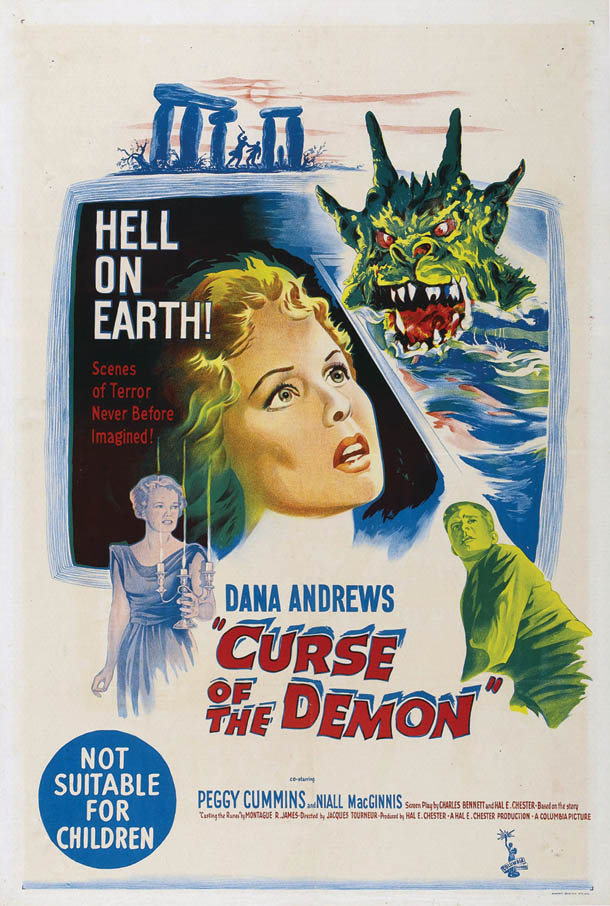
10 Casting The Runes
Writer: MR James (1911)
MR James binned most of the clichés of gothic horror, redefining the ghost story for the 20th century; yes, the past weighs heavily on his characters and scenarios, but his reserved, scholarly heroes, dangerous old books and artifacts, matter-of-fact reporting style, ancient supernatural evils and mundane real-world (albeit history-laden) settings immediately felt fresh and new at the time. His steadily building sense of menace, yet refusal to explain everything – forcing the reader to fill in the blanks – allowed the imagination to run riot in entertaining and disturbing fashion.
Sign up to the SFX Newsletter
Get sneak previews, exclusive competitions and details of special events each month!
“Casting the Runes” has been performed on TV, stage and radio, and became the (rather excellent) 1957 film Night Of The Demon (or Curse Of The Demon as it’s sometimes called); it’s part of his second collection, More Ghost Stories , and was once described by a writer in The Observer as the “scariest story ever, so horrifying that to this day I can’t keep it in my house”.
Most modern readers may find that over-the-top (surely the writing style is too restrained for such a visceral reaction?) but you can’t dismiss the story’s clever central idea: a Satanist called Karswell uses strips of paper covered in runic symbols to kill his enemies – receive one, and unless you can pass it back your fate is sealed.
.
.
9 A Christmas Carol
Writer: Charles Dickens (1843)
One of Charles Dickens’s best-known and most read works – if only because it’s so manageably short – A Christmas Carol has been adapted countless times to other media. (Bizarrely, one of the best film versions is courtesy of The Muppets, which if nothing else proves how iconic and versatile the tale is.) As well as being a powerful ghost story, it helped establish a very secular vision of Christmas that endures to this day: forget religion, it’s more about bitter winter – as personified by mean-spirited businessman Ebenezer Scrooge (quite what he does for a living is never made clear, though money-lender seems likely) – eventually melting with the promise of spring.
Dickens had written of similar supernatural events before: in The Pickwick Papers he’d told of an old meanie called Gabriel Grub who’d undergone a similar seasonal conversion when visited by time-manipulating goblins. He would do so again: his 1866 short story “The Signal-Man” – written for the Christmas edition of a Dickens-owned magazine called All The Year Round – may not be anywhere near as famous, but it’s revered as his true ghostly classic by Dickens aficionados (such as the ninth Doctor).
Here builds his tale of five chapters (or “staves” as he has it) in which four ghosts join stingy Scrooge on Christmas Eve. First there’s that of Jacob Marley, his long-dead business partner, then come three Christmas spirits, each showing him a seasonal scene: in the past, Scrooge’s happy childhood; in the present, regular folks building themselves the best Christmas they can afford; and in the future, Scrooge’s own unloved grave. The next morning Ebenezer is a changed man: Merry Christmas, one and all!
.
.
8 Ghost Story
Writer: Peter Straub (1979)
Straub’s epic novel isn’t just a terrific read – a sprawling, ambitious classic comparable with Stephen King at his best – it also functions as a kind of meta-textual summary of the literary ghost story. It’s fascinating stuff, but first and foremost just a brilliant tale, brilliantly told.
Five old men – the self-styled “Chowder Society” – keep themselves company in old age by telling each other ghost stories. Then one of them dies; what happens next brings in terrible secrets from their past, a beautiful (and vengeful) woman, and Donald, the nephew of one of the men, who ends up facing whatever terrible evil is haunting the Chowder Society and the small town of Milburn.
Elegant, intricate, moving, frightening and thoroughly unputdownable, Ghost Story is Straub reconfiguring the traditional spook story as modern blockbuster. (It was also made into a film, of which Straub said, “My sleek but expansive Cadillac was turned into a push-bike”.)
But for all its revenants and supernatural evil, it’s most frightening because it points the finger squarely at us: in one of the book’s most memorable exchanges, Don Wanderly is told, “You are a ghost”. Ghost Story is ambiguous enough to suggest deeper meanings, but remains on the surface a terrific chiller – and an enduring classic.
.
.
7 The Woman In Black
Writer: Susan Hill (1983)
One of the modern-day ghostly greats, Hill’s evergreen chiller is a period piece that’s been parlayed into an astonishingly successful West End production (second only in popularity to The Mousetrap ), a little-seen and Nigel Kneale-scripted 1989 TV adaptation, and next year’s blockbuster movie starring Daniel Radcliffe. And yet it’s the reserved dread of the book that endures the most.
Arthur Kipps, a solicitor dispatched to oversee the final effects of one Mrs Drablow, is caught up in the sinister machinations of the titular spectre who haunts the market town of Crythin Gifford. What follows is creepy and unsettling, and builds towards a horrifying climax. Hill’s unaffected, plain-speaking prose lends this taut tale a terrifying intensity, and what’s perhaps unusual about The Woman In Black is the lack of ambiguity; Kipps believes he’s seeing a ghost in short order. Rather, it’s the secrets the townspeople keep from Kipps – a community living in fear – that lend The Woman In Black its relentlessly-building bad feeling.
Mention must also go to the environment of the book: eerie Eel Marsh House, standing proud and alone on flat misty marshes, is as much a character as Kipps and his tormentor. It will be fascinating to see if the film version lives up to what Hill conjures up in our heads.
.
.
6 The Tell-Tale Heart
Writer: Edgar Allan Poe (1843)
“True! – nervous – very, very dreadfully nervous I had been and am; but why will you say that I am mad?”
So begins the delirious confession of a murderer in Poe’s tale of obsession and a heart that would not be stilled even in death. Brevity may be the soul of wit, but it has a home in terror. Poe’s story is a short one, but the briskness of the telling matches the breathless, fevered ramblings of his nameless protagonist.
Unsettled by the sight of an old man’s “evil eye”, the character becomes determined to rid himself of the unsuspecting source of his own torment, in the most extreme manner possible. He creeps in upon his intended victim in the night and smothers him. To dispose of the evidence, he dismembers the corpse and seals the remains under the floorboards. When the police come knocking, the murderer is utterly confident of his crime and boldly invites the officers to come and sit in the very room where the body lies hidden.
But the old man is not going to rest quietly and leave his murder unavenged. The more the killer protests about his lucidity and sanity, the more unhinged he becomes in this chilling study of madness.
.
.
5 The Shining
Writer: Stephen King (1977)
Director: Stanley Kubrick (1980)
There was famously little love lost between novelist Stephen King – whose third novel took a struggling, troubled writer and his young family to a lonely, shut-down Colorado hotel, where he’d act as winter caretaker – and filmmaker Stanley Kubrick, whose masterful movie version changed enough to incur King’s wrath: the writer initially felt his vital themes of alcoholism and the supernatural were both short-changed by Kubrick, “a man who thinks too much and feels too little”.
It’s a shame, because as outsiders we can love both equally: King’s original for the relentless evil of an Overlook Hotel that possesses poor, weak Jack Torrance so thoroughly; and Kubrick’s for its style and more level-headed Jack-was-mad-all-along approach.
The book was a smash hit, King’s first hardback best-seller; the film was launched as if it were a major release (the first Kubrick film to be presented as such), but made a slow start at the box office and was often poorly reviewed. These days, its qualities (cold, slow, disorientating) are much admired; the two versions equal-but-different in the minds of most horror fans. King later went on to help adapt a TV mini-series version that he felt was closer to his novel but, frankly, it’s not very good; stick with the book and the film.
.
.
4 The Monkey’s Paw
Writer: WW Jacobs (1902)
The ultimate cautionary tale about being careful what you wish for. On a quiet evening at home, the White family – father, mother and son Herbert – receive a visit from old friend Sergeant-Major Morris, returning from service with the British Army in India.
In Morris’s possession is a monkey’s paw, which he claims was enchanted by a holy man with the power to grant three wishes. The last owner used his final wish to ask for his own death. Morris throws the paw into the fire, but Mr White retrieves it before it’s consumed by the flames. White, urged on by his son, wishes for £200, a modest enough desire. The next day, Herbert is killed in an accident when he’s caught in the machinery at work. The company pays the grieving Whites compensation for their loss – £200.
A week later, Mrs White pleads with her husband to use their second wish to bring Herbert back from the grave. But can the paw overcome death itself? White crafts an atmosphere of terrible expectancy. The insistent knocking at the door in the middle of the night is a simple act made monstrous by the paw’s terrible power.
.
.
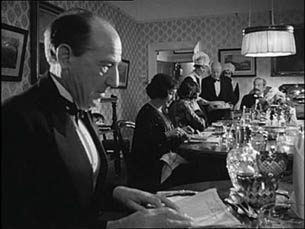
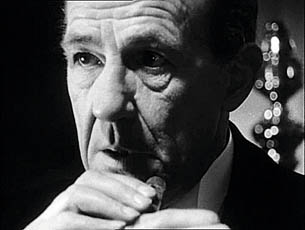
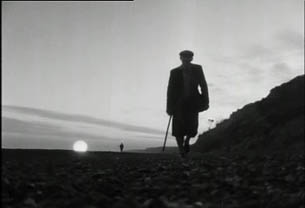
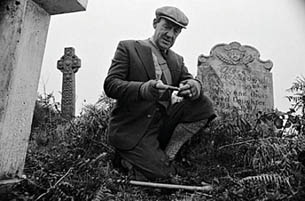
3 Whistle And I’ll Come To You
Writer/director: Jonathan Miller (1968)
MR James haunts this list like one of his ancient evils, but this time it’s not the original short story (“Oh, Whistle, And I’ll Come to You, My Lad”, excellent though it is) that we’re dealing with here, but instead a particularly celebrated TV adaptation, one written and directed by the great Jonathan Miller in semi-documentary style for the BBC’s Omnibus strand in 1968 (a recent version starring John Hurt is also worth catching, though messes with the story too much for purists).
Miller’s economical, atmospheric, mistily monochrome take tells of one of James’s introverted academics (Michael Hordern, older and stuffier than the guy in the story) in an out-of-season east coast English seaside resort discovering a bone whistle in a graveyard. Don’t blow it, you shout, yet of course he does, and later finds himself followed by black figures, woken by noises in his hotel room and dreaming of a spectre chasing him down a lonely beach. But it’s when the sheets of the bed form a ghostly shape that things really get out of hand… You might quibble with some directorial choices, but the core tale and atmosphere remain: a man, alone by a cold sea, chased by something seen from the corner of an eye…
.
.
2 The Turn Of The Screw
Writer: Henry James (1898)
Henry James’s novella is a very different ghost story to most in this list: few tales are more ambiguous, more open to interpretation. A Jane Eyre-like English governess is given carte blanche to look after a little girl, living on a gothic country estate, and her brother at boarding school by an absent uncle. When the boy is expelled for reasons unclear she’s scared to raise the matter, and soon after, mysterious, possibly-supernatural figures begin to appear to her around the grounds. Could they be the ghosts of her predecessor and her lover? And are the children aware of them too?
Preferring his spirits to be the everyday and normal turned “strange and sinister”, James’s spooks are easily read as figments of the governess’s increasingly unhinged mind; indeed, academics have been arguing over what they are, and mean, for the past hundred years. Referenced in other works by talents as far apart as Muriel Spark and Peter Straub, and adapted for film, TV and theatre dozens of times – everything from The Others (2001) to The Innocents (1961) has part of its DNA at the core – The Turn Of The Screw remains one of our most vital supernatural tales.
.
.
1 The Haunting Of Hill House/The Haunting
Writer: Shirley Jackson (1959)
Director: Robert Wise (1963)
Our number one spot is taken by two sides of the same sinister coin. Shirley Jackson’s peerless The Haunting Of Hill House and Robert Wise’s superb 1963 film adaptation The Haunting are indivisible in this list; the latter being a textbook example of how to take words on paper and transform them into moving pictures with sympathy and sensitivity.
And, crucially, both are bloody terrifying. A party of four people, led by a Doctor Montague, come to stay in Hill House to study whatever is supposed to haunt it. And there is definitely something there: the opening paragraph of the novel says “Hill House, not sane, stood by itself against its hills, holding darkness within.” Although nothing is ever really seen, banging noises, bulging doors and a phantom hand-holding in the night all bespeak of something terrible at the heart of Hill House. But what is it?
It might be Eleanor Vance. One of the four visitors to Hill House, she’s asked to come along because of what might have been a poltergeist experience when she was a child. We are told repeatedly in the novel that “Journeys end in lovers meeting,” and the troubled Eleanor – one of the greatest literary character studies of the past century, in any genre – responds to whatever lurks inside, as it responds in kind to her, all of which leads, inexorably, to a tragic conclusion.
Like The Turn Of The Screw , The Haunting Of Hill House trades in a certain amount of ambiguity, but that ambiguity – who is really doing the haunting here? – doesn’t obscure the fact that there definitely is something malignant and beyond the ken of man tormenting our heroes. And poor old Eleanor – who dreams of an escape from her drab little life, but in reality is tragically, unavoidably on a collision course with coming home – is key to it. “I am like a small creature swallowed whole by a monster,” thinks Eleanor, “and the monster feels my tiny movements inside.”
The Haunting Of Hill House is a remarkable novel: chilling, psychologically complex and written with a dark poetry: “Within, walls continued upright, bricks met neatly, floors were firm, and doors were sensibly shut; silence lay steadily against the wood and stone of Hill House, and whatever walked there, walked alone.”
It is, in our estimation, quite simply the finest ghost story ever written. The film version, Robert Wise’s The Haunting (ignore the dreadful 1999 remake) trades in exactly the same psychological currency as the novel, and somehow
manages to make the simple, inexplicable frights of the book – the ungodly banging, the mere turning of a door handle – as terrifying as they are in your imagination.
Filmed in glorious black and white, and with a superb cast that includes Claire Bloom and a crackerjack Julie Harris as Eleanor, it is a proud companion piece to the novel, and as essential a ghost story to the world of film as The Haunting Of Hill House is to literature. If you’ve not read the book or seen the movie, do so now, and revel in their complexities and terror; you may never sleep again but you won’t regret it.
SFX Magazine is the world's number one sci-fi, fantasy, and horror magazine published by Future PLC. Established in 1995, SFX Magazine prides itself on writing for its fans, welcoming geeks, collectors, and aficionados into its readership for over 25 years. Covering films, TV shows, books, comics, games, merch, and more, SFX Magazine is published every month. If you love it, chances are we do too and you'll find it in SFX.


